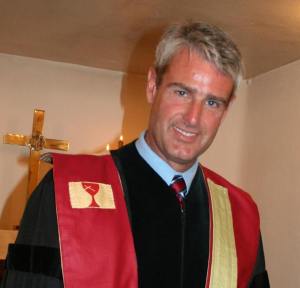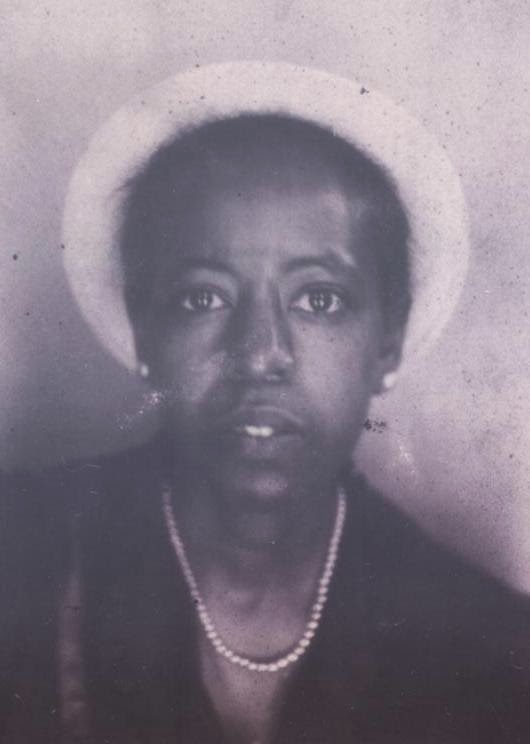Medicine for All
 The scripture readings
for this solemnity honoring St. Alphonsus de Liguori are so fitting. From
Isaiah; “… He has sent me to bring good news to the oppressed, to bind up the
brokenhearted, to proclaim liberty to captives, and release to prisoners; to
proclaim the year of the Lord’s favor…” And from The Gospel of Matthew; “…He
saw the crowds; he had compassion for them, because they were harassed and
helpless, like sheep without a shepherd.” These embody Alphonsus’ inspiration received
during time of retreat in the rural hillside settlements beyond Naples. While
one could fairly trip over priests on the streets of Naples no one came to the
remote villages to minister to simple souls. This inspiration was to become the
guide for Redemptorists, an anthem of service to the poor and most abandoned.
The scripture readings
for this solemnity honoring St. Alphonsus de Liguori are so fitting. From
Isaiah; “… He has sent me to bring good news to the oppressed, to bind up the
brokenhearted, to proclaim liberty to captives, and release to prisoners; to
proclaim the year of the Lord’s favor…” And from The Gospel of Matthew; “…He
saw the crowds; he had compassion for them, because they were harassed and
helpless, like sheep without a shepherd.” These embody Alphonsus’ inspiration received
during time of retreat in the rural hillside settlements beyond Naples. While
one could fairly trip over priests on the streets of Naples no one came to the
remote villages to minister to simple souls. This inspiration was to become the
guide for Redemptorists, an anthem of service to the poor and most abandoned.
It is
beyond me to understand how this inspiration morphed into a Redemptorist
reputation some of us still remember,
those parish missions preaching hellfire and brimstone. However that may
have come to be, today we can offer praise and thanksgiving to God for the
fruits of post-Vatican II renewal in the Redemptorist Congregation and its
return to preaching the true message of Alphonsus.
Alphonsian
spirituality had three legs, the crib, the cross and the Eucharist, each one
supporting its preeminent platform – God’s supreme love. Each leg is the
expression of that love; the crib of the Incarnation, the cross of the ultimate
sacrifice and the Eucharist as the love gift that keeps on giving. Alphonsus
spoke of God not as Lord or King or Father but rather as friend, brother,
mother, spouse, and lover. His God, the God he begs you and I to love and trust
as our intimate companion, is a God insanely in love with us. This is the God
he called “Iddio Pazzo” the crazy God, the crazy God of love, who is insanely
in love with us. He wrote, “Heaven for God is the human heart.”
But here is another thing that is hard to understand. This preacher of God’s love, this theologian who bucked the popular tide of rigorism and Jansenism, who opposed sterile legalism because, according to him such rigor was never the true teaching of the Church; this was a man who was plagued all his very long life of 91 years by a sometimes crippling scrupulosity. He ran through spiritual directors. The successful ones had to forbid him to even think of not celebrating Mass because he questioned his worthiness to do so. In the matter of his inspiration to create a new congregation to serve the most abandoned he went from one person to another with his self-doubt and uncertainty. Maria Celeste’s enthusiasm and sense of right direction for her own foundation and strong encouragement for his seems to have moved him at long last into decisive mode.
But here is another thing that is hard to understand. This preacher of God’s love, this theologian who bucked the popular tide of rigorism and Jansenism, who opposed sterile legalism because, according to him such rigor was never the true teaching of the Church; this was a man who was plagued all his very long life of 91 years by a sometimes crippling scrupulosity. He ran through spiritual directors. The successful ones had to forbid him to even think of not celebrating Mass because he questioned his worthiness to do so. In the matter of his inspiration to create a new congregation to serve the most abandoned he went from one person to another with his self-doubt and uncertainty. Maria Celeste’s enthusiasm and sense of right direction for her own foundation and strong encouragement for his seems to have moved him at long last into decisive mode.
All his life Alphonsus bore the weight of high expectations from both his father’s military bearing and his mother’s thorough piety. He never ceased to be hard on himself. He even made private vows never to waste time and to persevere in his vocation. The antidote for his scrupulosity was meditation on the lover God, Iddio Pazzo, who expressed infinite love in the mystery of the Incarnation, the sacrifice of the Cross and gift of the Eucharist. Alphonsus allowed himself to bathe in the warm waters of that meditation. And it would seem that part of his treatment was to turn his whole life into an effort to communicate that love to the world. The antidote for his addiction became a gift to be poured out for others; not merely in the form of good deeds but in the effort to guide people into their own acceptance of and growing relationship with the God who is pure love.
I ask myself, “Can I, like Alphonsus, turn what the God of love speaks to me in my own struggles, into gift for others? Can we apply God’s medicine received in our struggles to the healing of others even as we continue to endure personal challenges?
I can never be perfect. Alphonsus was never perfect. He was a holy genius who must have been a trial to live with. But he wrote instructions to others to see to it that brothers had their treats and he walked the Stations of the Cross bare foot in the hallway so as not to disturb his sleeping confreres. He worried about them during their missions and welcomed them home. He warned them not to be highflootin’ in their preaching and railed against those who would deprive people of Holy Communion. He took money from diocesan coffers to buy food for the poor during a time of famine. He must have been so proud of his son in the congregation, Fr. Bernard Haring who said, “The heart of moral life is charity to one’s neighbor.”
Alphonsus de Liguori shared the medicine he found for his soul with all who would listen to his mission preaching, those who would read his 110 books. He shared the medicine which was the infinite love and mercy of God. This Doctor of the Church, dispensed medicine in the hospital which is that Church, the healing, forgiving, merciful hospital spoken of by Pope Francis. In this regard, Alphonsus is a theologian for our times, inspiration and guide for the Year of Mercy.
Can we pray with Alphonsus:
My God and my all, I will resist you no longer. I will leave all to be all yours. I will no longer live for myself… Your claims on my love are too great. My only desire is to love you now and forever. My love, my hope, my courage, my comfort; give me strength to be faithful to you. .. O love of my soul, I offer myself completely to you to satisfy the desire which you have to be united with me… Give me strength to think of you, to desire you, to seek you, my beloved and only good.











